|
|
|
Sort Order |
|
|
|
Items / Page
|
|
|
|
|
|
|
| Srl | Item |
| 1 |
ID:
117266
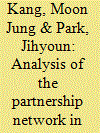

|
|
|
|
|
| Publication |
2013.
|
| Summary/Abstract |
The clean development mechanism (CDM) is a global collaborative action proposed at the Kyoto Protocol in response to climate change issues. The CDM contributes to cost-efficient reduction of greenhouse gas emissions in industrialized countries and promotes sustainable development in developing countries. Its fundamental framework is based on partnerships between industrialized and developing countries. This study employs social network analysis to investigate the dynamics of the partnership networks observed in 3816 CDM projects registered in the database of the United Nations Framework Convention on Climate Change over the period of 2005 to 2011. Our three main findings can be summarized as follows. First, the CDM partnership network is a small world; however, its density tends to decrease as the number of participants for a CDM project decreases. Second, the partnership networks' leading groups tend to shift from partner countries into host countries. Third, a host country that pursues more partnership-based projects takes better control of resources and knowledge-flow in the ego-network formed around that country, and can thus better utilize global resources for its CDM projects.
|
|
|
|
|
|
|
|
|
|
|
|
|
|
|
|
| 2 |
ID:
051604
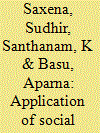

|
|
|
| 3 |
ID:
144803
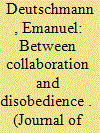

|
|
|
|
|
| Summary/Abstract |
This article examines the behavior of the Guantánamo detainees in terms of collaboration and disobedience and how it influences their chances of getting a release recommendation. Joint Task Force Guantanamo–authored memoranda on 765 detainees are used to create a network of accusations between detainees and an attribute data set, which are analyzed using multivariate regression and Kolmogorov–Smirnov tests. It is found that while the distribution of incriminating statements obeys a power law, 62.6 percent of all detainees do not incriminate anyone. Yemenis and Saudi Arabians heavily overcontribute regarding incriminating statements and disobedient actions, whereas Afghans and Pakistanis undercontribute. Disobedient behavior does not affect the likelihood of getting a release recommendation, except for hunger striking, which has a negative effect. By releasing information, detainees don’t improve their own chances of getting release recommendations but impair those of the detainees they implicate. Three different groups of detainees are identified whose behavioral patterns seem to follow distinct logics.
|
|
|
|
|
|
|
|
|
|
|
|
|
|
|
|
| 4 |
ID:
156098


|
|
|
|
|
| Summary/Abstract |
The present study explores civil society organizations’ (CSOs) civic and political potential in Turkey. For this purpose, it generates original data from Antalya and utilizes social network analysis to analyze the CSOs’ cooperation structure. The analysis points out certain levels of dynamism and diversity in terms of the CSOs’ cooperative connections. Yet it also shows variance between the public-goods oriented Putnam-type CSOs and the special-interest oriented Olson-type CSOs in terms of their civic and political potential. This observed variance, in turn, is likely to influence their respective potential to articulate common interests on the one hand, to affect politics on the other hand.
|
|
|
|
|
|
|
|
|
|
|
|
|
|
|
|
| 5 |
ID:
103938
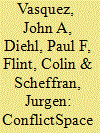

|
|
|
|
|
| Publication |
2011.
|
| Summary/Abstract |
Social network analysis is used to show that underlying systemic structure made war more likely to spread in 1914 than earlier in the century. The changing network density of three diffusion processes is seen as crucial-alliances, interstate rivalries, and territorial disputes. The findings show that the density of each of these factors increased in the system in varying degrees from 1900 to the end of 1913. How the three diffusion processes interacted with contiguity to make the local war between Austria-Hungary and Serbia spread to become a world war is explained both theoretically and historically.
|
|
|
|
|
|
|
|
|
|
|
|
|
|
|
|
| 6 |
ID:
104329
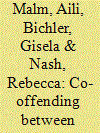

|
|
|
|
|
| Publication |
2011.
|
| Summary/Abstract |
Rather than examining networks of individuals as prior research has done, this study systematically examines the structure and composition of co-offending among types of criminal enterprise groups. Using social network analysis, the authors show that different types of crime groups tend to have unique co-offending patterns as measured by network composition and structure. The results also support the countercurrent of criminologists who suggest that ethnically derived categories may be misleading when trying to classify criminal enterprise groups.
|
|
|
|
|
|
|
|
|
|
|
|
|
|
|
|
| 7 |
ID:
107970


|
|
|
|
|
| Publication |
2011.
|
| Summary/Abstract |
The concept of networks has become synonymous with terrorism in recent years. Despite the abundance of material engaging the concept of terrorist networks, there is a paucity of research that applies analytic network methods to the empirical study of observed data. This article fills that void by comparing two arguments about terror network structure using a newly released attack network data set. One account suggests that terrorists purposefully structure their networks to maximize operational security (OPSEC) by minimizing connections, while an alternate proposition relies on findings in network sciences showing that many networks have a few well-connected individuals (referred to as scale-free structure). Empirical analysis of six evolving attack networks produces results contradicting both assertions. This article then looks beyond structure to examine whether there are any causal relationships between network characteristics and output, specifically attack casualties. The article concludes by examining possible drivers of network structure and pertinent policy implications.
|
|
|
|
|
|
|
|
|
|
|
|
|
|
|
|
| 8 |
ID:
189660
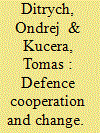

|
|
|
|
|
| Summary/Abstract |
This article situates recent initiatives to deepen security and defence cooperation in the European Union in the historical perspective. It proposes a model of constitutive relationship between the process of change in a security community and the formation of a transnational defence industry community of practice which yields positive feedback (‘productive returns’) to the security community as a broader assemblage within which it was constituted. This model is applied to the paradigmatic case of European security community that formed after the World War II (WWII). The analysis shows that the key driver for defence integration traced by means of social network analysis (SNA) in this case was economic rather than political, and for an extended period of time it developed without formal institutions. The productive return of the ‘defence industry machine’ as a distinct community of practice that was constituted through the integration process consisted in the sense of deeper belonging and a shared sense of working well together in a traditionally highly nationalised defence milieu.
|
|
|
|
|
|
|
|
|
|
|
|
|
|
|
|
| 9 |
ID:
127944
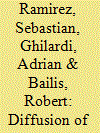

|
|
|
|
|
| Publication |
2014.
|
| Summary/Abstract |
ACM, Active Community Member, person that takes the initiative to fill out an application on behalf of a community; Seed, randomly selected ACM that allowed us to start collecting information; Ego, person that is interviewed. An Ego can also be an Alter, if it is mentioned by another Ego; Alter, people that provided (Type 1) or received (Type 2) information, as recalled by the Ego; Type 1 edge, an information flow in which an Alter provides information to an Ego; Type 2 edge, an information flow in which an Ego provides information to an Alter; Student, a person whose main occupation is to go to school; Radio, a message spread through the radio. Usually local stations in which an individual is interviewed; Internet, information about the stoves posted on Proyecto Mirador's Website; Maquila, a person that works at a factory for an international company, textile and food processing factories are usual; Agriculture, a peasant that works on agriculture, regardless of land tenancy; Health, a nurse, doctor or other health worker; Church, a priest, nun, minister or person who works as a minister of a faith; Education, a person who works as a school teacher or university professor; PM or PM associates, direct employees of Proyecto Mirador and its Implementers; Other NGO, a person that works on other non-governmental organizations. For example, Peace corps, Hivueras, Plan Honduras; Local, a local leader that has an appointment in the community but does not receive a monetary compensation. For example, members of the water board, village councils; Housewife, a woman whose main occupation is to keep the house; Business, a person that does commerce or services, includes people that sell food informally, artisans, masons, etc.; Government, a person who works directly for the government (except education and health practitioners); PM employees, direct employees without the implementers
|
|
|
|
|
|
|
|
|
|
|
|
|
|
|
|
| 10 |
ID:
153656


|
|
|
|
|
| Summary/Abstract |
While some borders are real firewalls against conflicts, others appear like tinder just waiting for the smallest spark. Only recently has research focused on the transnational perspective of conflict and current research has focused mostly on isolated aspects of this phenomenon. In this article, we provide a unified framework for conflict contagion that takes into account receiver, sender, dyad, and network effects. This is a novel perspective on conflict contagion, and our empirical results suggest that distinguishing between sender and receiver effects allows for a better understanding of spillover effects. We provide insights that especially excluded ethnic groups impact the risk of countries sending and receiving conflicts from its neighbors.
|
|
|
|
|
|
|
|
|
|
|
|
|
|
|
|
| 11 |
ID:
165996
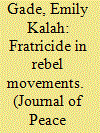

|
|
|
|
|
| Summary/Abstract |
Violent conflict among rebels is a common feature of civil wars and insurgencies. Yet, not all rebel groups are equally prone to such infighting. While previous research has focused on the systemic causes of violent conflict within rebel movements, this article explores the factors that affect the risk of conflict between pairs of rebel groups. We generate hypotheses concerning how differences in power, ideology, and state sponsors between rebel groups impact their propensity to clash and test them using data from the Syrian civil war. The data, drawn from hundreds of infighting claims made by rebel groups on social media, are used to construct a network of conflictual ties among 30 rebel groups. The relationship between the observed network structure and the independent variables is evaluated using network analysis metrics and methods including assortativity, community structure, simulation, and latent space modeling. We find strong evidence that ideologically distant groups have a higher propensity for infighting than ideologically proximate ones. We also find support for power asymmetry, meaning that pairs of groups of disparate size are at greater risk of infighting than pairs of equal strength. No support was found for the proposition that sharing state sponsors mitigates rebels’ propensity for infighting. Our results provide an important corrective to prevailing theory, which discounts the role of ideology in militant factional dynamics within fragmented conflicts.
|
|
|
|
|
|
|
|
|
|
|
|
|
|
|
|
| 12 |
ID:
156908
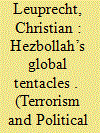

|
|
|
|
|
| Summary/Abstract |
That terrorists, criminals, and their facilitators exploit the global marketplace is well known. While the global movement of illicit goods is well documented, robust empirical evidence linking terrorism and organized crime remains elusive. This article posits Network Science as a means of making these links more apparent. As a critical case study, Hezbollah is quite possibly the most mature globalized terrorist organization, although it thinks of itself as the “Party of God.” However, the means seem to justify the ends: this article shows that Hezbollah’s holy men have no qualms about resorting to pornography, contraband cigarettes, immigration fraud, and credit card fraud to raise funds. Beyond establishing links, Social Network Analysis reveals other important characteristics, such as the relative autonomy from Hezbollah headquarters that local fundraising networks enjoy. That finding implies a paradigm shift: Hezbollah is no less a terrorist organization than an organized crime syndicate. This is apparent in a network’s structure. Transnational Organized Crime is typically about nodes being connected to many others in the network. Yet, Hezbollah fundraising networks allow such connectivity because of the group’s typically high levels of mutual trust and familial relationships. This creates a vulnerability that can be exploited by law enforcement and intelligence organizations.
|
|
|
|
|
|
|
|
|
|
|
|
|
|
|
|
| 13 |
ID:
077616
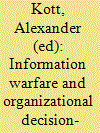

|
|
|
|
|
| Publication |
London, ARTECH House, 2007.
|
| Description |
xvii, 273p.Hbk
|
| Standard Number |
9781596930797
|
|
|
|
|
|
|
|
|
|
|
|
Copies: C:1/I:0,R:0,Q:0
Circulation
| Accession# | Call# | Current Location | Status | Policy | Location |
| 052375 | 658.403/KOT 052375 | Main | On Shelf | General | |
|
|
|
|
| 14 |
ID:
172155
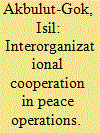

|
|
|
|
|
| Summary/Abstract |
This study proposes a network approach to interorganizational cooperation in peace operations. It suggests that in addition to key organisational characteristics that are already established in the literature, such as organisational type, the nature of relationships among intergovernmental organisations (IGOs) drives the formation and evolution of inter-IGO networks in peace operations. To evaluate my hypotheses, I use the temporal exponential random graph model (TERGM). The empirical analysis provides evidence that the formation of interorganizational networks among IGOs in peace operations is largely driven by relational effects, e.g. network effects.
|
|
|
|
|
|
|
|
|
|
|
|
|
|
|
|
| 15 |
ID:
139998
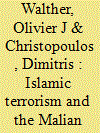

|
|
|
|
|
| Summary/Abstract |
Using Social Network Analysis, this article illuminates the relationship between the Islamists and rebels involved in the Malian conflict. We use publicly available data to demonstrate that the connection between Islamists and rebels depends on brokers who defected from the Tuareg rebellion to radical groups. Our work also details the internal relationships within each of the subgroups. By using descriptive network analysis, we are able to show that both groups were affected by the accidental disappearance of one of the Al-Qaeda in the Islamic Maghreb emirs, and the death of one of the architects of the Tuareg rebellion. Both events affected social cohesion. The article concludes with a discussion of the influence that the French-backed intervention may have on the evolution of the conflict, and how network analysis could contribute to a better understanding of terrorist activities in the region.
|
|
|
|
|
|
|
|
|
|
|
|
|
|
|
|
| 16 |
ID:
156021


|
|
|
| 17 |
ID:
078970
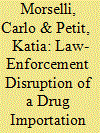

|
|
|
|
|
| Publication |
2007.
|
| Summary/Abstract |
This study focuses on the structure and evolution of a drug importation network that operated from Montreal, Canada, and that was the target of an extensive 2-year criminal investigation. The investigation was atypical in that it followed a seize-but-do-not-arrest strategy - while 11 drug shipments were seized by police throughout this period, arrests were never made until the final phase of the investigation. Such a case offers a rare opportunity to study the dynamics of a criminal network under intense surveillance and disruption. The reconstruction of the importation network is based on electronic communication transcripts that were intercepted and compiled during the investigation. Findings from analyses of the principal changes that took place within the communication network reveal how network centralization and critical node status are variable, and not static, properties of a criminal network under considerable constraint. The study demonstrates how a criminal network decentralizes and is re-ordered in response to intense law-enforcement targeting. Contributions are made to research on disruption in criminal networks. We conclude with a discussion on how a criminal network's flexibility, a feature generally presented as a sign of resilience, may contribute to a more significant demise within a context of intensive control
|
|
|
|
|
|
|
|
|
|
|
|
|
|
|
|
| 18 |
ID:
145826
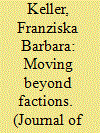

|
|
|
|
|
| Summary/Abstract |
Informal connections play an important role in regimes all across the world, but among China's political elite, it is particularly factional affiliation that is said to structure contention over who will rule and who will fall victim to a purge. This article identifies two approaches to measuring factional ties in the literature: the exploratory approach traces alliance ties through qualitative assessment of insider sources, while the structured approach uses publicly available data to infer factions from shared characteristics. The article combines the two by arguing that informal politics is better conceptualized as a process of alliance formation shaped by an underlying social (network) structure. Among the structured approaches, coworker networks best capture the latter, but this can be further refined by noting the number of instances of working together, or by taking into account promotions that have occurred while the two individuals were coworkers.
|
|
|
|
|
|
|
|
|
|
|
|
|
|
|
|
| 19 |
ID:
193114


|
|
|
|
|
| Summary/Abstract |
Ceasefires are a critical tool for those engaged in conflict management during civil wars, yet little scholarship exists that systematically assesses the durability of these arrangements. We argue that ceasefire failure is driven by variations in the composition of organized dissent including and beyond the context of the civil war. In particular, ceasefires should break down faster given increasingly complicated environments of broader anti-government dissent, where resistance dynamics alter the perceived or actual balance of power between rebels and the state. Using original data on organizations participating in violent and nonviolent dissent across African states from 1990-2015, and new data on civil war ceasefires, we find that ceasefire breakdown is precipitated by complex resistance environments that put the government in a precarious position. Increasing numbers of mobilized organizations, higher ideological fractionalization among those groups, more dense and increasingly decentralized dissident networks all expedite the failure of ceasefires in civil wars.
|
|
|
|
|
|
|
|
|
|
|
|
|
|
|
|
| 20 |
ID:
169072


|
|
|
|
|
| Summary/Abstract |
When rebels make alliances, what informs their choice of allies? Civil wars are rarely simple contests between rebels and incumbent regimes. Rather, rival militant networks provide the context in which these fragmented conflicts unfold. Alliances that emerge within this competitive landscape have the power to alter conflict trajectories and shape their outcomes. Yet patterns of interrebel cooperation are understudied. The existing scholarship on rebel alliances focuses on why rebels cooperate, but little attention is given to the composition of those alliances: with whom rebels cooperate. We explore how power, ideology, and state sponsorship can shape alliance choices in multiparty civil wars. Employing network analysis and an original data set of tactical cooperation among Syrian rebels, we find compelling evidence that ideological homophily is a primary driver of rebel collaboration. Our findings contribute to an emerging literature that reasserts the role of ideology in conflict processes.
|
|
|
|
|
|
|
|
|
|
|
|
|
|
|
|
|
|
|
|
|